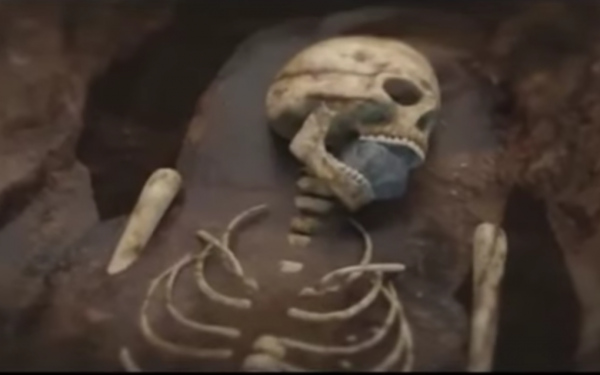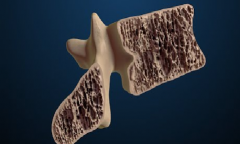By Vishal Goel, | January 27, 2017

An image of the skeleton found with a stone in its mouth. (YouTube)
Archaeologists have discovered a skeleton from the third or fourth century AD which had his tongue apparently severed and a flat stone pushed into his mouth, in what is believed to have been a harsh form of punishment.
According to Simon Mays, Historic England's human skeletal biologist, the find is very unique because this is not something that has been identified so far in the archaeological records and thus, it has been identified as a new practice, he told The Guardian.
Like Us on Facebook
The skeleton, which was found face down in its grave at Stanwick near the River Nene in Northamptonshire 1991, must have belonged to somebody whose behaviour was marked as odd or threatening within a community, said Mays. A study of facedown burials has suggested that the practice was used across societies to humiliate or disrespect the deceased person.
Caroline Arcini, the lead author of the study from Sweden's National Heritage Board, said that the custom "sanctioned this apparently negative treatment of the dead." She said that shaming the dead "is most probably a deep-rooted behavior in humankind."
So-called prone burials have been discovered previously in late Roman cemeteries as well. Mays said that this was considered a way of stopping the corpse from rising from its grave and menacing the living. There are also been examples of skulls with stones in their mouths.
There are many theories to explain why the man had his tongue cut out and replaced with a stone object. One theory suggests that he had mental health issues and severed his own tongue while Mays argues that it could have been a form of punishment. Also, there are Germanic law codes which talk about cutting people's tongues out because they spread malicious accusations against other people, Mays added.
The research on the human remains was recently published by archaeologists and specialists at Historic England.
-
Use of Coronavirus Pandemic Drones Raises Privacy Concerns: Drones Spread Fear, Local Officials Say

-
Coronavirus Hampers The Delivery Of Lockheed Martin F-35 Stealth Fighters For 2020

-
Instagram Speeds Up Plans to Add Account Memorialization Feature Due to COVID-19 Deaths

-
NASA: Perseverance Plans to Bring 'Mars Rock' to Earth in 2031

-
600 Dead And 3,000 In The Hospital as Iranians Believed Drinking High-Concentrations of Alcohol Can Cure The Coronavirus

-
600 Dead And 3,000 In The Hospital as Iranians Believed Drinking High-Concentrations of Alcohol Can Cure The Coronavirus

-
COVID-19: Doctors, Nurses Use Virtual Reality to Learn New Skills in Treating Coronavirus Patients











